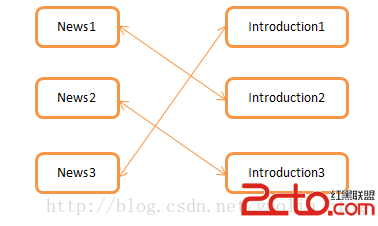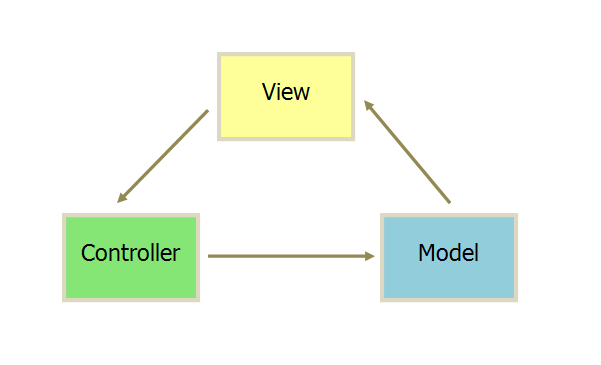編輯:關於Android編程
最近要做一個類似QQ底部有氣泡的功能,試了幾個方案不太好,我想很多開發者使用TabHost都會知道它不保存狀態,每次都要重新加載布局,為了保存狀態,使用RadioGroup來實現,狀態是可以保存了,問題是無法實現氣泡功能,不能自定義布局,因為RadioGroup裡面只能包含RadioButton,不然狀態切換不起用作,這個可以查看RadioGroup源碼,為了既能保存狀態又能實現氣泡功能,所以只能自己修改控件了或者自己寫一個類似的切換功能,查看了FragmentTabHost的源碼,可以知道FragmentTabHost不保存狀態是因為切換fragment的時候是使用detach和attach來Fragment的隱藏和顯示的,這樣的話每次切換肯定要重新加載布局,處理使用detach和attach,我們還可以使用show和hide來實現顯示和隱藏,這樣可以保存狀態,方案出來了就是修改FragmentTabHost源碼將切換Fragment的方式detach和attach改為hide和show。
下面就是修改後的FragmentTabHost的源碼:
/*
* Copyright (C) 2012 The Android Open Source Project
*
* Licensed under the Apache License, Version 2.0 (the "License");
* you may not use this file except in compliance with the License.
* You may obtain a copy of the License at
*
* http://www.apache.org/licenses/LICENSE-2.0
*
* Unless required by applicable law or agreed to in writing, software
* distributed under the License is distributed on an "AS IS" BASIS,
* WITHOUT WARRANTIES OR CONDITIONS OF ANY KIND, either express or implied.
* See the License for the specific language governing permissions and
* limitations under the License.
*/
package com.jwzhangjie.com;
import java.util.ArrayList;
import android.content.Context;
import android.content.res.TypedArray;
import android.os.Bundle;
import android.os.Parcel;
import android.os.Parcelable;
import android.support.v4.app.Fragment;
import android.support.v4.app.FragmentManager;
import android.support.v4.app.FragmentTransaction;
import android.util.AttributeSet;
import android.view.View;
import android.view.ViewGroup;
import android.widget.FrameLayout;
import android.widget.LinearLayout;
import android.widget.TabHost;
import android.widget.TabWidget;
/**
* Special TabHost that allows the use of {@link Fragment} objects for its tab
* content. When placing this in a view hierarchy, after inflating the hierarchy
* you must call {@link #setup(Context, FragmentManager, int)} to complete the
* initialization of the tab host.
*
*
* Here is a simple example of using a FragmentTabHost in an Activity:
*
* {@sample
* development/samples/Support4Demos/src/com/example/android/supportv4/app/
* FragmentTabs.java complete}
*
*
* This can also be used inside of a fragment through fragment nesting:
*
* {@sample
* development/samples/Support4Demos/src/com/example/android/supportv4/app/
* FragmentTabsFragmentSupport.java complete}
*/
public class FragmentTabHost extends TabHost implements
TabHost.OnTabChangeListener {
private final ArrayList mTabs = new ArrayList();
private FrameLayout mRealTabContent;
private Context mContext;
private FragmentManager mFragmentManager;
private int mContainerId;
private TabHost.OnTabChangeListener mOnTabChangeListener;
private TabInfo mLastTab;
private boolean mAttached;
static final class TabInfo {
private final String tag;
private final Class clss;
private final Bundle args;
private Fragment fragment;
TabInfo(String _tag, Class _class, Bundle _args) {
tag = _tag;
clss = _class;
args = _args;
}
}
static class DummyTabFactory implements TabHost.TabContentFactory {
private final Context mContext;
public DummyTabFactory(Context context) {
mContext = context;
}
@Override
public View createTabContent(String tag) {
View v = new View(mContext);
v.setMinimumWidth(0);
v.setMinimumHeight(0);
return v;
}
}
static class SavedState extends BaseSavedState {
String curTab;
SavedState(Parcelable superState) {
super(superState);
}
private SavedState(Parcel in) {
super(in);
curTab = in.readString();
}
@Override
public void writeToParcel(Parcel out, int flags) {
super.writeToParcel(out, flags);
out.writeString(curTab);
}
@Override
public String toString() {
return "FragmentTabHost.SavedState{"
+ Integer.toHexString(System.identityHashCode(this))
+ " curTab=" + curTab + "}";
}
public static final Parcelable.Creator CREATOR = new Parcelable.Creator() {
public SavedState createFromParcel(Parcel in) {
return new SavedState(in);
}
public SavedState[] newArray(int size) {
return new SavedState[size];
}
};
}
public FragmentTabHost(Context context) {
// Note that we call through to the version that takes an AttributeSet,
// because the simple Context construct can result in a broken object!
super(context, null);
initFragmentTabHost(context, null);
}
public FragmentTabHost(Context context, AttributeSet attrs) {
super(context, attrs);
initFragmentTabHost(context, attrs);
}
private void initFragmentTabHost(Context context, AttributeSet attrs) {
TypedArray a = context.obtainStyledAttributes(attrs,
new int[] { android.R.attr.inflatedId }, 0, 0);
mContainerId = a.getResourceId(0, 0);
a.recycle();
super.setOnTabChangedListener(this);
}
private void ensureHierarchy(Context context) {
// If owner hasn't made its own view hierarchy, then as a convenience
// we will construct a standard one here.
if (findViewById(android.R.id.tabs) == null) {
LinearLayout ll = new LinearLayout(context);
ll.setOrientation(LinearLayout.VERTICAL);
addView(ll, new FrameLayout.LayoutParams(
ViewGroup.LayoutParams.MATCH_PARENT,
ViewGroup.LayoutParams.MATCH_PARENT));
TabWidget tw = new TabWidget(context);
tw.setId(android.R.id.tabs);
tw.setOrientation(TabWidget.HORIZONTAL);
ll.addView(tw, new LinearLayout.LayoutParams(
ViewGroup.LayoutParams.MATCH_PARENT,
ViewGroup.LayoutParams.WRAP_CONTENT, 0));
FrameLayout fl = new FrameLayout(context);
fl.setId(android.R.id.tabcontent);
ll.addView(fl, new LinearLayout.LayoutParams(0, 0, 0));
mRealTabContent = fl = new FrameLayout(context);
mRealTabContent.setId(mContainerId);
ll.addView(fl, new LinearLayout.LayoutParams(
LinearLayout.LayoutParams.MATCH_PARENT, 0, 1));
}
}
/**
* @deprecated Don't call the original TabHost setup, you must instead call
* {@link #setup(Context, FragmentManager)} or
* {@link #setup(Context, FragmentManager, int)}.
*/
@Override
@Deprecated
public void setup() {
throw new IllegalStateException(
"Must call setup() that takes a Context and FragmentManager");
}
public void setup(Context context, FragmentManager manager) {
ensureHierarchy(context); // Ensure views required by super.setup()
super.setup();
mContext = context;
mFragmentManager = manager;
ensureContent();
}
public void setup(Context context, FragmentManager manager, int containerId) {
ensureHierarchy(context); // Ensure views required by super.setup()
super.setup();
mContext = context;
mFragmentManager = manager;
mContainerId = containerId;
ensureContent();
mRealTabContent.setId(containerId);
// We must have an ID to be able to save/restore our state. If
// the owner hasn't set one at this point, we will set it ourself.
if (getId() == View.NO_ID) {
setId(android.R.id.tabhost);
}
}
private void ensureContent() {
if (mRealTabContent == null) {
mRealTabContent = (FrameLayout) findViewById(mContainerId);
if (mRealTabContent == null) {
throw new IllegalStateException(
"No tab content FrameLayout found for id "
+ mContainerId);
}
}
}
@Override
public void setOnTabChangedListener(OnTabChangeListener l) {
mOnTabChangeListener = l;
}
public void addTab(TabHost.TabSpec tabSpec, Class clss, Bundle args) {
tabSpec.setContent(new DummyTabFactory(mContext));
String tag = tabSpec.getTag();
TabInfo info = new TabInfo(tag, clss, args);
if (mAttached) {
// If we are already attached to the window, then check to make
// sure this tab's fragment is inactive if it exists. This shouldn't
// normally happen.
info.fragment = mFragmentManager.findFragmentByTag(tag);
if (info.fragment != null && !info.fragment.isDetached()) {
FragmentTransaction ft = mFragmentManager.beginTransaction();
// ft.detach(info.fragment);
ft.hide(info.fragment);
ft.commit();
}
}
mTabs.add(info);
addTab(tabSpec);
}
@Override
protected void onAttachedToWindow() {
super.onAttachedToWindow();
String currentTab = getCurrentTabTag();
// Go through all tabs and make sure their fragments match
// the correct state.
FragmentTransaction ft = null;
for (int i = 0; i < mTabs.size(); i++) {
TabInfo tab = mTabs.get(i);
tab.fragment = mFragmentManager.findFragmentByTag(tab.tag);
// if (tab.fragment != null && !tab.fragment.isDetached()) {
if (tab.fragment != null) {
if (tab.tag.equals(currentTab)) {
// The fragment for this tab is already there and
// active, and it is what we really want to have
// as the current tab. Nothing to do.
mLastTab = tab;
} else {
// This fragment was restored in the active state,
// but is not the current tab. Deactivate it.
if (ft == null) {
ft = mFragmentManager.beginTransaction();
}
// ft.detach(tab.fragment);
ft.hide(tab.fragment);
}
}
}
// We are now ready to go. Make sure we are switched to the
// correct tab.
mAttached = true;
ft = doTabChanged(currentTab, ft);
if (ft != null) {
ft.commit();
mFragmentManager.executePendingTransactions();
}
}
@Override
protected void onDetachedFromWindow() {
super.onDetachedFromWindow();
mAttached = false;
}
@Override
protected Parcelable onSaveInstanceState() {
Parcelable superState = super.onSaveInstanceState();
SavedState ss = new SavedState(superState);
ss.curTab = getCurrentTabTag();
return ss;
}
@Override
protected void onRestoreInstanceState(Parcelable state) {
SavedState ss = (SavedState) state;
super.onRestoreInstanceState(ss.getSuperState());
setCurrentTabByTag(ss.curTab);
}
@Override
public void onTabChanged(String tabId) {
if (mAttached) {
FragmentTransaction ft = doTabChanged(tabId, null);
if (ft != null) {
ft.commit();
}
}
if (mOnTabChangeListener != null) {
mOnTabChangeListener.onTabChanged(tabId);
}
}
private FragmentTransaction doTabChanged(String tabId,
FragmentTransaction ft) {
TabInfo newTab = null;
for (int i = 0; i < mTabs.size(); i++) {
TabInfo tab = mTabs.get(i);
if (tab.tag.equals(tabId)) {
newTab = tab;
}
}
if (newTab == null) {
throw new IllegalStateException("No tab known for tag " + tabId);
}
if (mLastTab != newTab) {
if (ft == null) {
ft = mFragmentManager.beginTransaction();
}
if (mLastTab != null) {
if (mLastTab.fragment != null) {
// ft.detach(mLastTab.fragment);
ft.hide(mLastTab.fragment);
}
}
if (newTab != null) {
if (newTab.fragment == null) {
newTab.fragment = Fragment.instantiate(mContext,
newTab.clss.getName(), newTab.args);
ft.add(mContainerId, newTab.fragment, newTab.tag);
} else {
// ft.attach(newTab.fragment);
ft.show(newTab.fragment);
}
}
mLastTab = newTab;
}
return ft;
}
}
這是一個Demo
 Android數據庫高手秘籍(四)——使用LitePal建立表關聯
Android數據庫高手秘籍(四)——使用LitePal建立表關聯
關聯關系的基礎知識 喜歡把所有的代碼都寫在一個類裡的程序員肯定是個新手。沒錯,任何一個像樣的程序都不可能僅僅只有一個類的,同樣地,任何一個像樣的數據庫也不可
 android手機虛擬按鈕開發問題點
android手機虛擬按鈕開發問題點
最近做了手機虛擬按鈕開發,和華為榮耀的虛擬按鈕類似,效果如下(屏幕底下部分): 功能描述:手機開機,“虛擬按鈕”自動隱藏,當從手機下邊
 Android開發本地及網絡Mp3音樂播放器(十一)使用Jsoup組件請求網絡,並解析音樂數據
Android開發本地及網絡Mp3音樂播放器(十一)使用Jsoup組件請求網絡,並解析音樂數據
實現功能:實現NetMusicListFragment(網絡音樂界面)實現net_music_list_layout.xml(網絡音樂界面UI)使用Jsoup組件請求網絡
 MVC/MVVM/MVP簡單理解
MVC/MVVM/MVP簡單理解
上一篇文章中我們講解了關於Android開發過程中常見的內存洩露場景與檢測方案。Android系統為每個應用程序分配的內存是有限的,當一個應用中產生的內存洩漏的情況比較多